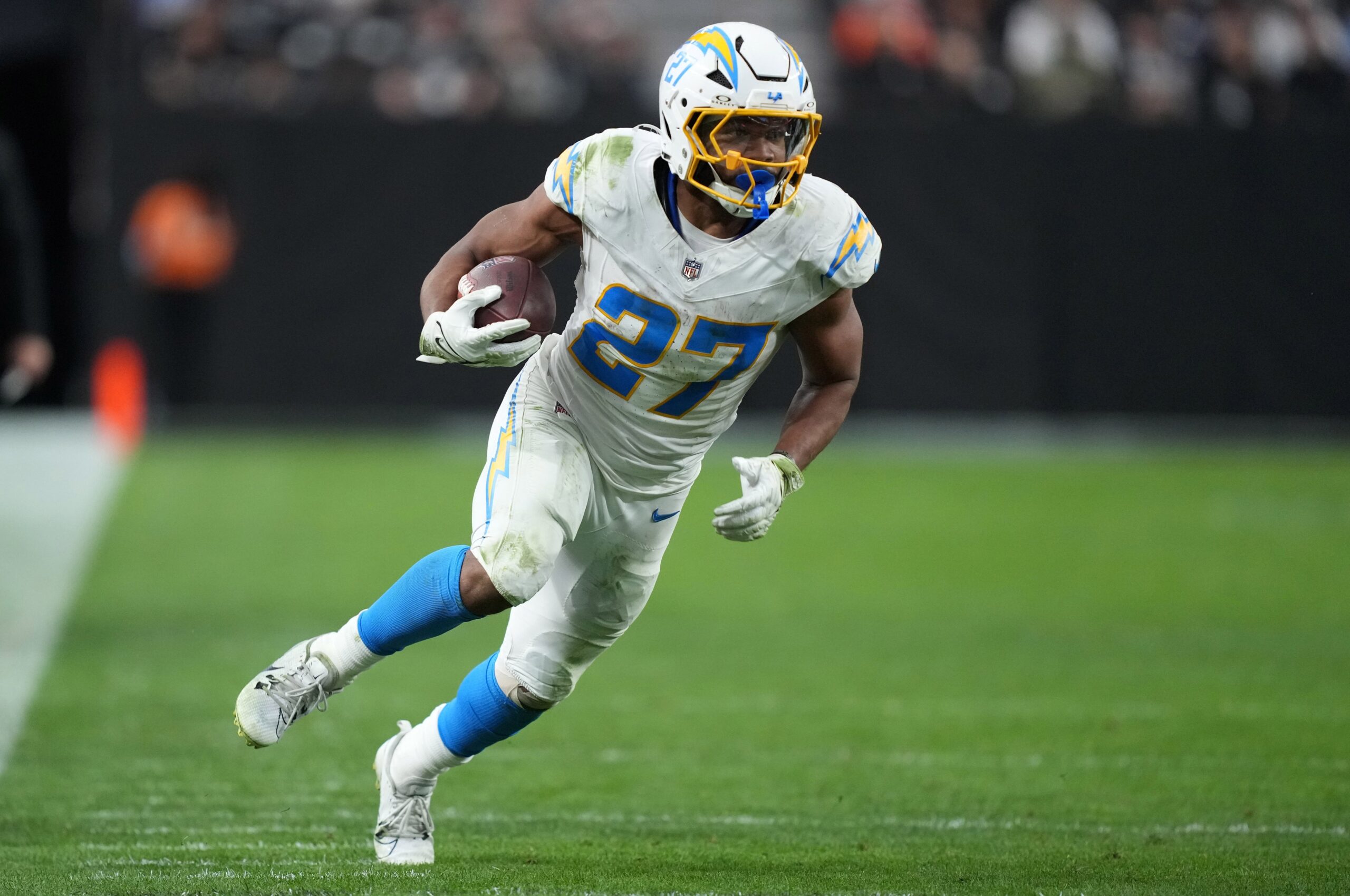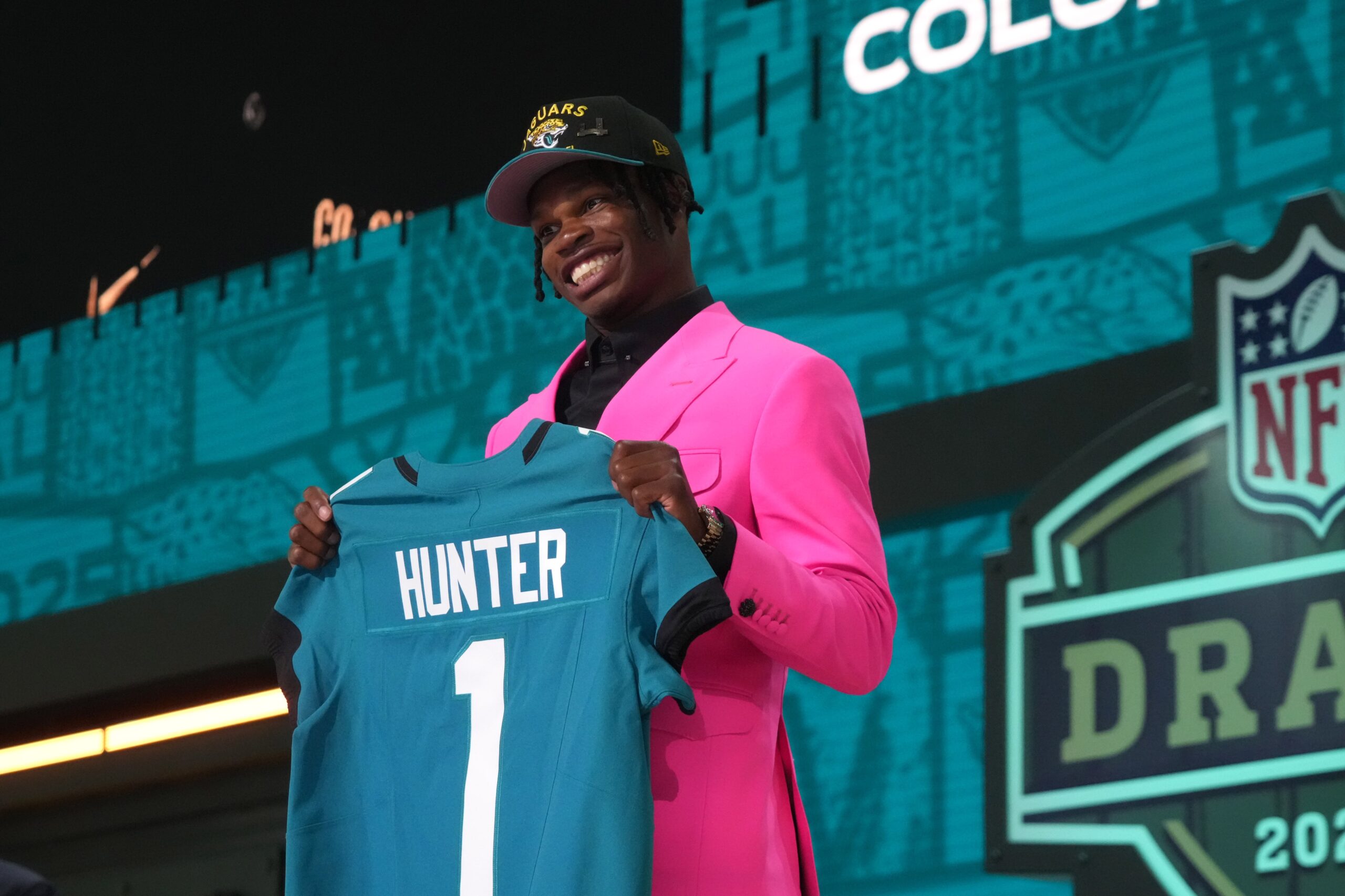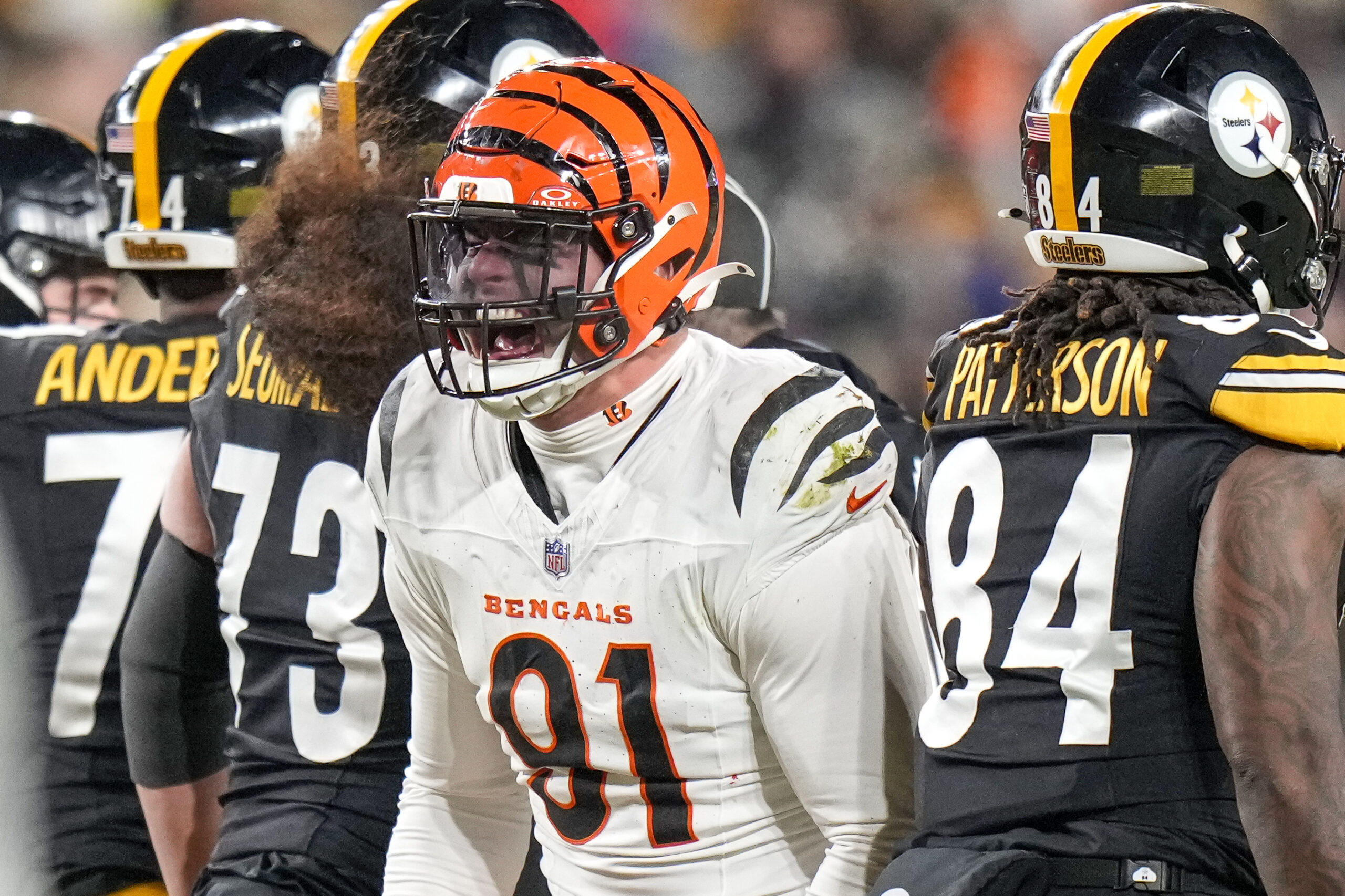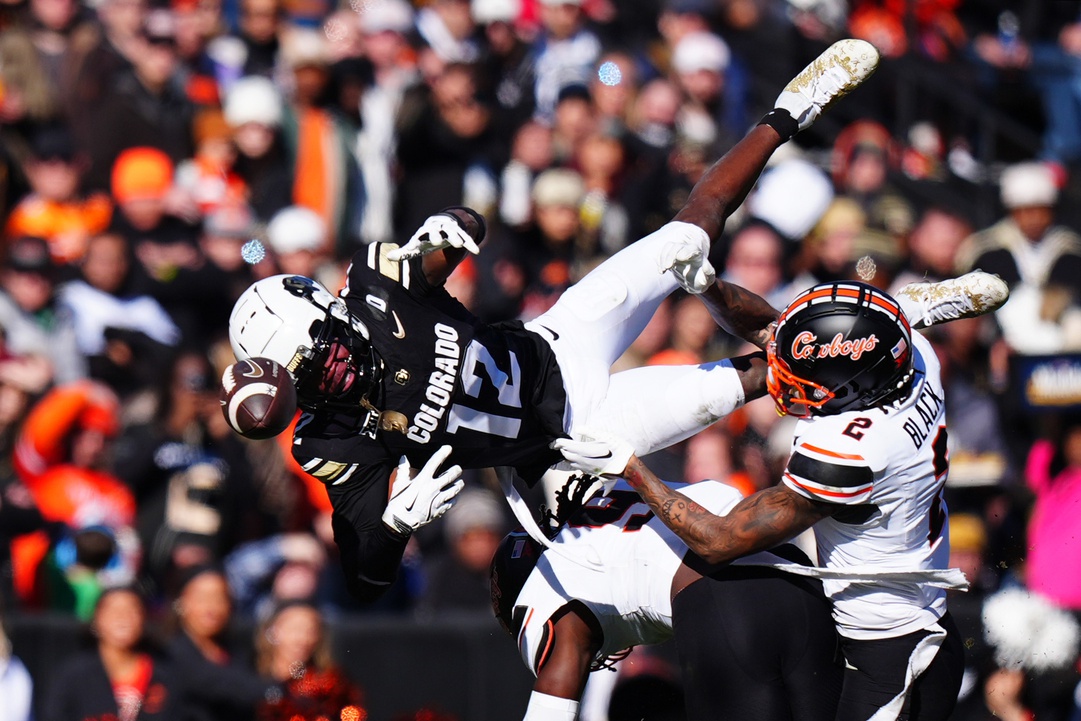NFL Analysis
6/27/24
6 min read
The Biggest Position Unit Upgrades Of The 2024 NFL Offseason
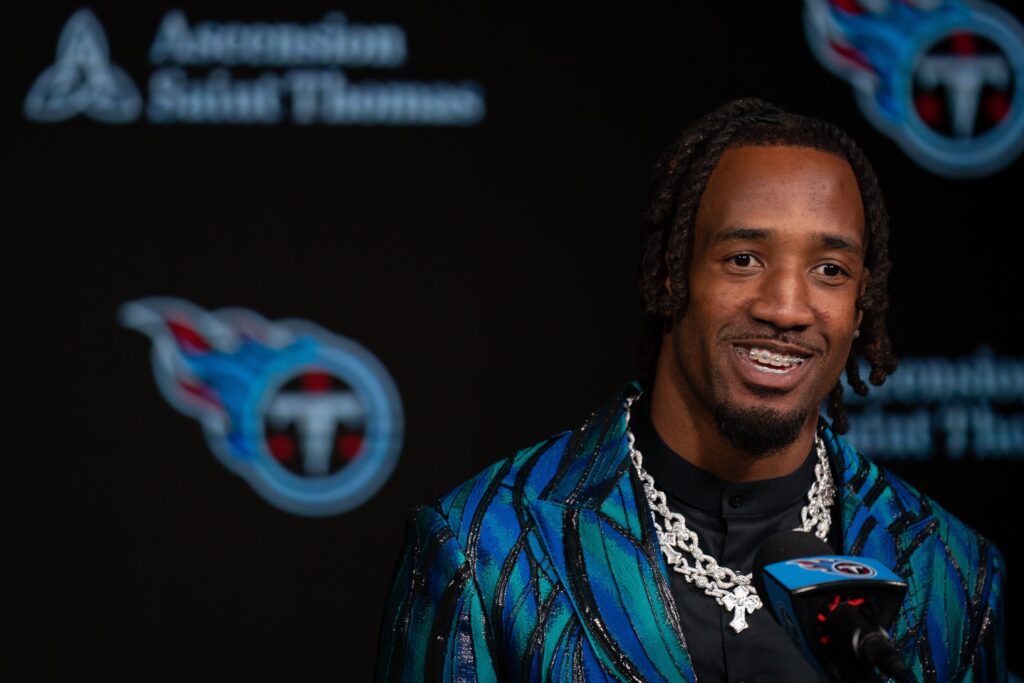
It’s been a long offseason. As we enter July and sprint toward training camps, it’s a good time to take a good look at where some NFL rosters sit at this point in the year.
With that, we can see some of the league's most improved units, which is what we’ll look at today. Based on depth and quality of play during 2023, here are the units that could see the biggest improvement.
NFL's Most Improved Position Groups
Chicago Bears receivers 
DJ Moore was an instant upgrade to the Chicago Bears' receiving corps last season but became the only real threat. Moore saw 28.5 percent of the team’s targets and accounted for nearly 40 percent of the team’s receiving yards. He was 15th in yards per route run among receivers with at least 200 routes, per TruMedia.
Moore is now joined by Keenan Allen and Rome Odunze to make up one of the league's most well-rounded trios.
Allen still has the route running and body control that made him one of the league’s best short-area receivers. His game was never based on speed, so it continues to age well. Last season, he was eighth in yards on slants, which should make him a good safety net option in the middle of the field for Caleb Williams.
Odunze and Moore will serve as the big play threats. Moore was third in yards on go rates last season and 13th on posts. He can also catch-and-run to turn short passes into big gains.
Then there is Odunze, the ninth overall pick who will slide in as the offense's WR3. Odunze combines Allen’s body control with Moore’s ability to win down the field. At the University of Washington, Odunze was one of college football’s best deep receivers in a vertical-heavy offense.
With these three receivers, Cole Kmet then becomes the fourth option, while free agent signing D’Andre Swift can catch passes out of the backfield. This is a deep and promising group of skill players around Williams.
Tennessee Titans cornerbacks 
No team had a bigger split between success against the run and the pass last season than the Tennessee Titans. The Titans were seventh in EPA per play against the run and 30th against the pass. The secondary could not hold up in coverage.
As a result, the Titans made a massive effort to turn that group around. It started with signing Chidobe Awuzie in free agency. Awuzie played through a herniated disc for parts of last season, which led to up-and-down play, but he’s been a plus corner in coverage for much of his career and is expected to be healthy this season.
On the opposite side, the Titans made their biggest move by trading for L’Jarius Sneed. Sneed was one of the league’s best cornerbacks last season with Kansas City and ranked 11th in adjusted yards allowed per coverage snap. Sneed is a physical outside corner who can play aggressive coverage and lock down opposing No. 1 receivers.
These two come to a defense coordinated by Dennard Wilson, who was the defensive backs coach with the Baltimore Ravens last season. That Ravens defense played tight, aggressive coverage on the outside, and while Wilson has more influences than his year in Baltimore, it’s easy to see how that coverage philosophy will transfer to Tennessee’s new cornerback duo.
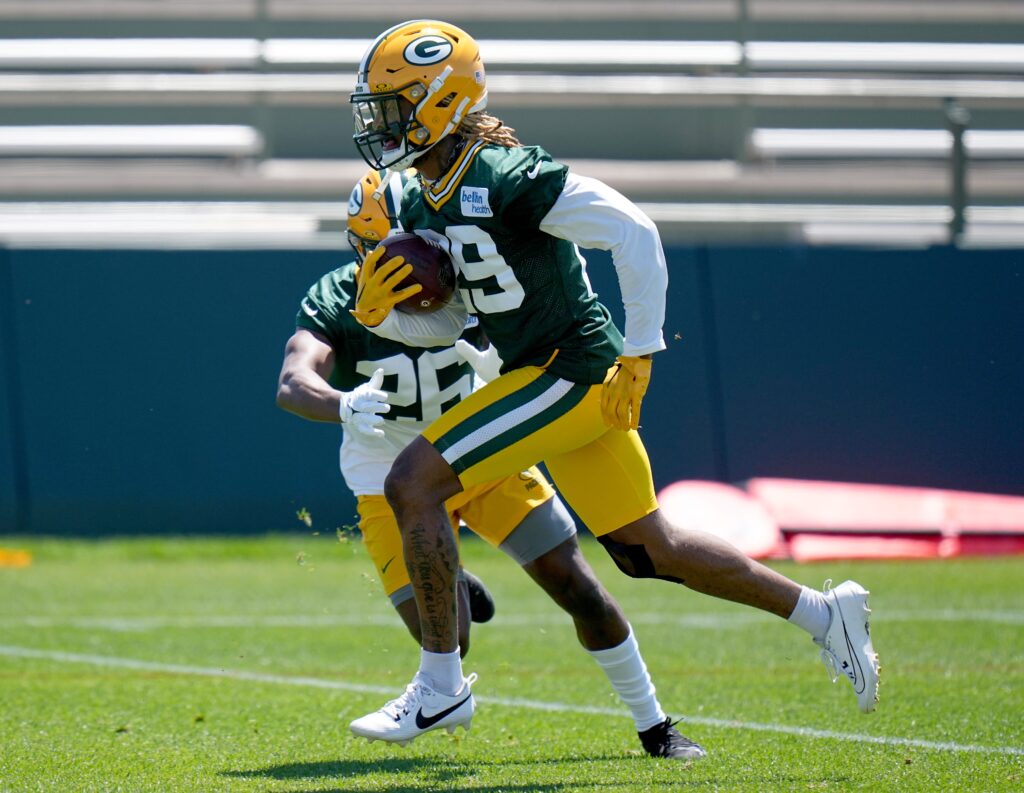
Green Bay Packers safeties 
The safety play might have been the most inconsistent part of a disappointing Green Bay Packers defense last season. Green Bay couldn’t consistently get good coverage or downhill run fits from the position, which left the back end of the defense exposed. The Packers were 29th in EPA per play against throws of 16 or more air yards last season.
Green Bay made a rare free agency splash by signing Xavier McKinney. McKinney fits perfectly into what the Packers want to do with new defensive coordinator Jeff Hafley. Hafley ran more single-high shells at Boston College, and McKinney is likely to play that post-safety role for the Packers.
McKinney has the range to play as a single-high safety — he did that for 27.5 percent of his snaps in 2023 — but he also has the versatility to play as a split safety, in the box, and the slot. He spent nearly 10 percent of his snaps near the line of scrimmage on third down in the Giants’ blitz-happy scheme last season.
He can break on the ball no matter where he’s lined up, and he even jumped a screen pass for an interception against the Eagles last season.
The Packers then drafted Georgia safety Javon Bullard in the second round. Bullard is another versatile defensive back who can handle post and split safety looks and play down in the box. He was also a converted slot corner early in his college career.
Combining the improvement in player quality at the position and a new defensive scheme that should get the most out of those plays (including more tight and aggressive coverage from cornerbacks), the Packers should be much better on the back end of the defense in 2024.
New York Jets offensive line 
This is almost a ranking by default. The New York Jets were 30th in pass block win rate and 29th in run block win rate last season.
The most common five-man grouping along the offensive line played only 13.6 percent of the offensive snaps together, the lowest total for any team in the league. The Jets also only had two offensive line groupings that played at least 100 snaps together, while 14 different combinations played at least 30 snaps.
In free agency, the Jets sought to bring in more talent to at least boost the quality of the projected starting five, which would hopefully also bump up the depth. The Jets signed Tyron Smith and Morgan Moses at tackle and John Simpson at guard. That’s three plus veterans to add to second-year center Joe Tippman and a returning Alijah Vera-Tucker.
Moses missed three games last season but played in every game from 2015 to 2022. Smith has been one of the league's best tackles when on the field but hasn’t played 16 games since 2015. He played 13 in 2023 and was still good enough to make second-team All-Pro at tackle.
There’s no promise the line will play together for 17 games, but given how much the Jets had to scramble throughout the year with different combinations, this should be a much-improved unit, even if the line is not always at full strength.


